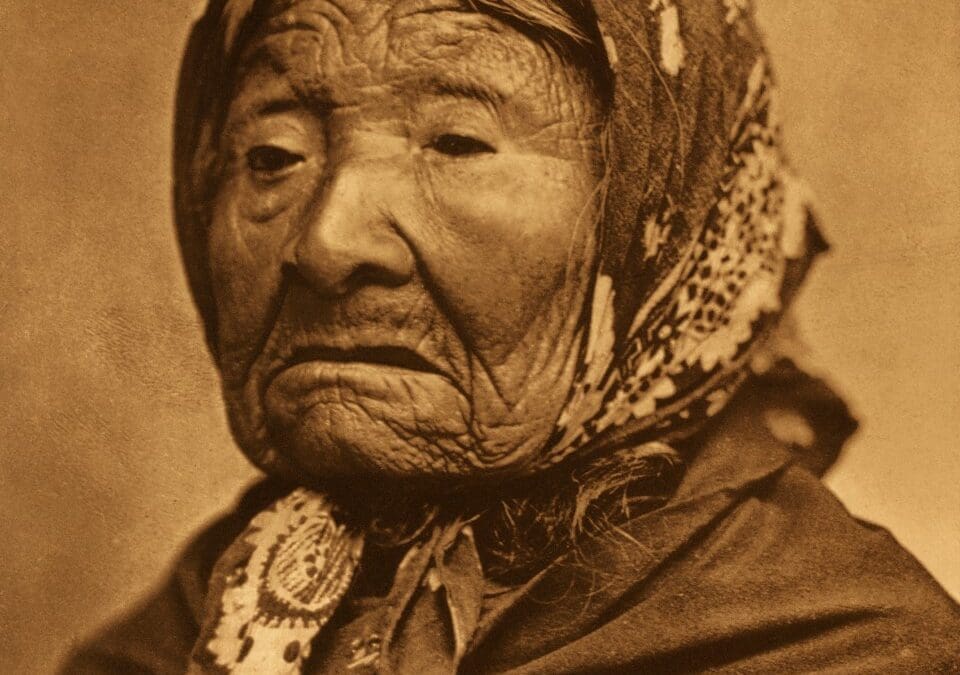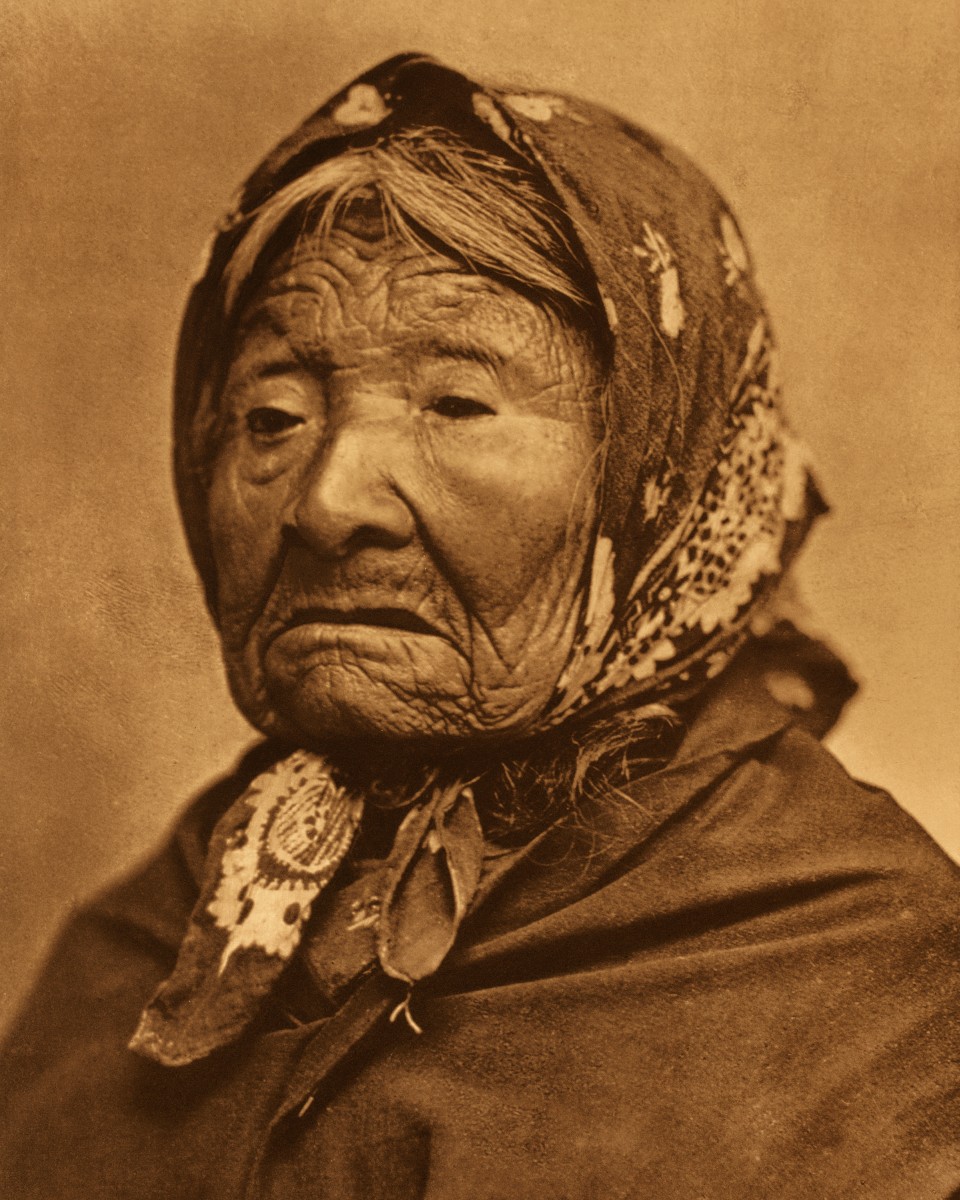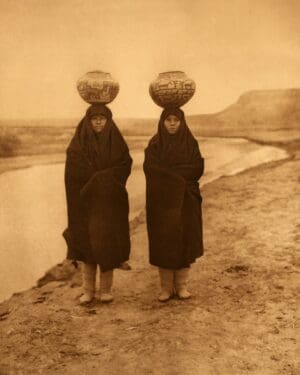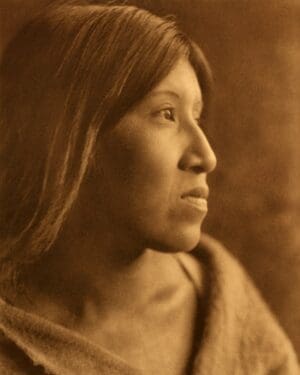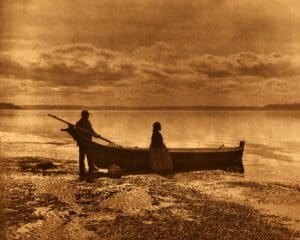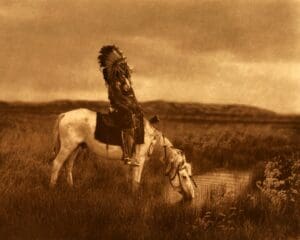Angeline, also known as Kikisoblu, was the eldest daughter of Chief Seattle, the leader of the Duwamish and Suquamish tribes. Born around 1820, she was given the name Angeline by Catherine Maynard, the wife of one of Seattle’s founders.
Angeline went on to play a pivotal role in the city’s early history. In 1856, she warned Seattle’s settlers of an impending attack, allowing them to defend themselves in what became known as the Battle of Seattle.
Despite being required to leave her homeland after the Treaty of Point Elliott in 1855, Angeline remained in Seattle in a waterfront cabin near Pike Place Market. She sold baskets and did laundry to support herself, becoming a well-known local figure.
Edward Curtis: Documenting Princess Angeline
The renowned photographer Edward Curtis took several portraits of Princess Angeline later in her life. These images captured her wearing traditional clothing with a red bandana and shawl.
Curtis was drawn to document Angeline as part of his life’s work photographing vanishing Native American cultures in the early 1900s. His images preserved her legacy and connection to the region’s indigenous heritage.
Princess Angeline’s Legacy
After her passing in 1896, Angeline was buried in Lake View Cemetery beside founding father Henry Yesler. Her funeral was attended by many as a testament to her impact on Seattle.
Today, Princess Angeline is memorialized through Seattle landmarks named after her, from neighborhood streets to a day center for homeless women. The orca whale J17 was also nicknamed Princess Angeline to honor her link to Seattle’s native tribes.
Own a Piece of Seattle History
If you want to own a reminder of this important figure in Seattle’s past, check out our rare prints of Princess Angeline taken by photographers like Curtis. You can also download The North American Indian to learn more about her father Chief Seattle and their legacies.

